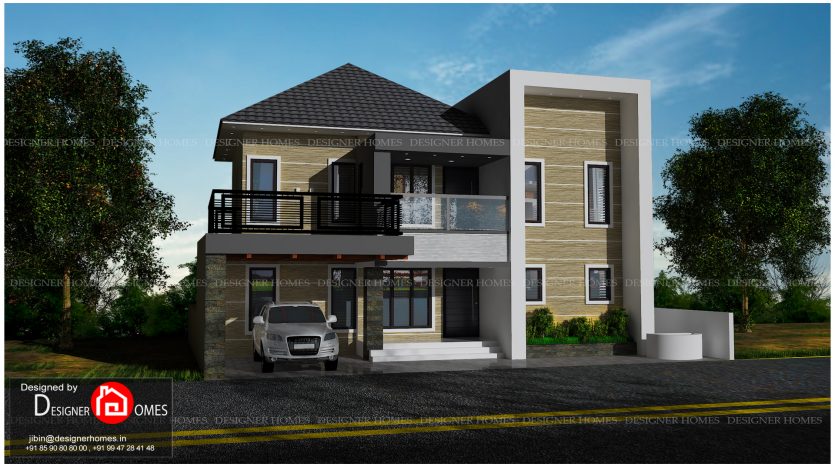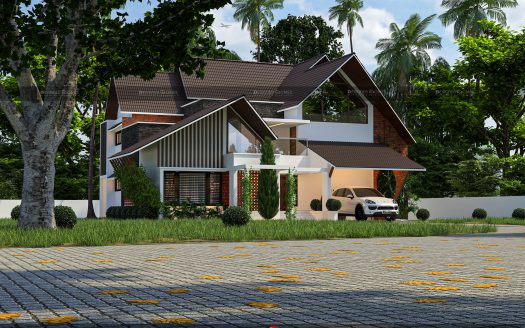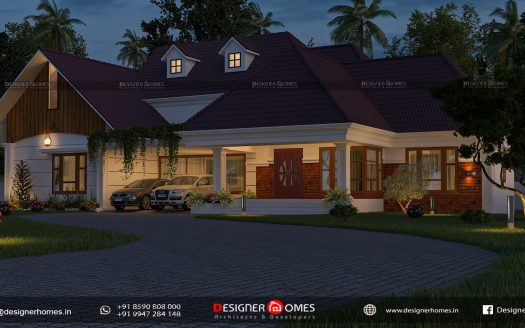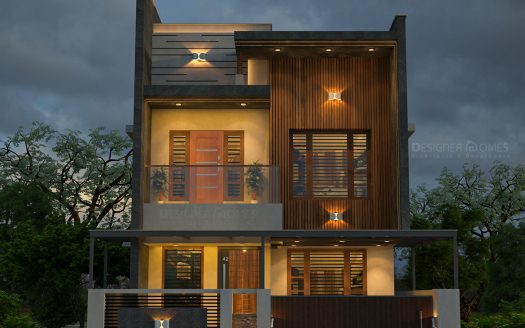Started Since :2002
Designer : Top Architects in Ernakulam
Estimated Cost : ₹ 63 Lakhs
Design Type : Exterior
Contact Designer- 4 Bedrooms
- 4 Bathrooms
- 1866.8 Sq Feet
- 12 Cent
Design Description
SEMI CONTEMPORARY HOUSE
A single family duplex residence known as a semi-detached house (commonly shortened as semi) has one wall in common with the home next door. The term separates this type of home from terraced homes, which have a shared wall on both sides, and detached homes, which have no shared walls. Semi-contemporary homes are frequently constructed in pairs, with the layouts of one home being an exact replica of the other.
History of contemporary design
Modernism, a turn-of-the-century movement defined by an emphasis on abstract thinking, utility, and stark, basic shapes,
lies at the basis of contemporary design. A contemporary home is one that reflects current fashion. Because the notion
of modern home is so fluid, it frequently overlaps with different interior design concepts. A contemporary home is
more than just one that is fashionable, while that is a big part of it. Contemporary design is its own subgroup
of design, and it refers to a specific point of view with distinct features—some of which, at the time, coincide with
modern and minimalist home.
1. German and Scandinavian origins: Modern design may be traced back to German Bauhaus design and Scandinavian design.
Bauhaus, also known as Staatliche’s Bauhaus, was a German design school and subsequent art movement in the early
twentieth century that combined high art with utility in the visual, decorative, and architectural arts.
2. Modern art influence: The contemporary art movement rejected the maximalist tendencies of Victorian design in favor of a form
-follows-function philosophy, which influenced modern house design. From the 1920s until the early 1950s, new technology
, industrialization, and access to construction materials such as steel and concrete all influenced modern art and architecture.
This era’s dominant style was defined by clean lines, floor-to-ceiling windows, open living areas, and flat roofs.
3. Enduring legacy: By the conclusion of WWII, emerging architects were criticizing the harsh aspect of minimalism.
Minimalist sensibilities began to give way to a revival of ornamentation and postmodernism by the 1960s. Nonetheless,
modernism’s influence lives on in renowned structures and as an inspiration for current architecture.
https://kmhp.in/designs/contemporary-interior-design-2
193/s, 1st floor, AAk building,moolepadan nagar, opp.polytechnic, kallamassery
Kalamassery
Cochin
Kerala
















